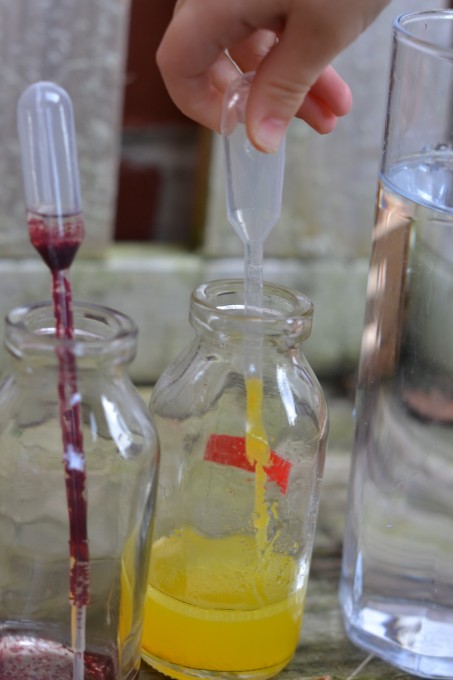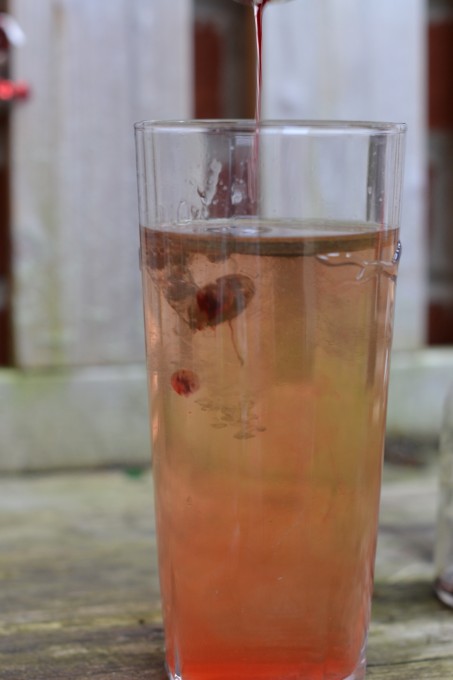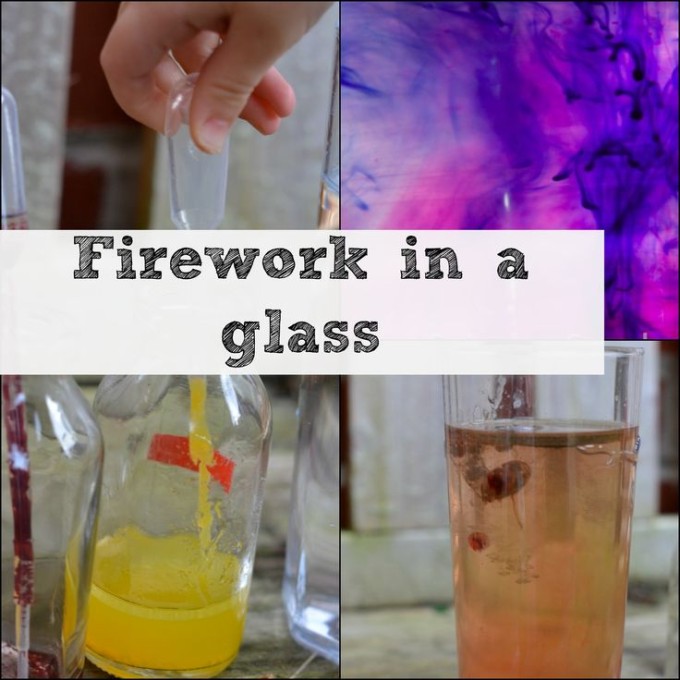We’ve made a firework in a glass before, but considering it’s almost bonfire night and my 3 year old is desperate to do anything that involves a pipette, I thought we’d try again.
This is a very cool, simple and fun experiment, and also completely safe, just don’t drink the water.
Equipment
- A tall glass
- Warm water
- Oil
- Food colouring
Instructions
- Fill the tall glass with warm water.
- Pour a small amount of oil into another container and add a few drops of food colouring.
- Give it a good stir, if it doesn’t mix, add a bit of water.
- Pour the food colouring and oil mixture into the warm water and watch the fireworks.
The Science Bit
Oil and water don’t mix. Also oil is less dense than water (meaning there is less of it in the same volume) and therefore floats on top of water in a nice layer.
The food colouring we used was water based and therefore does not mix with the oil, instead it sinks through the oil into the water below.
Since the addition of the colouring makes the food colouring heavier than the water it sinks to the bottom leaving trails (resembling fireworks) as some of the colour diffuses into the water.
What do you think? Can you make a multicoloured firework?
Other oil and water experiments
Last Updated on January 28, 2015 by Emma Vanstone




We did this experiment a few years back for 4th of July. I have to repeat it one of these days – I think daughter will enjoy it even more now when she is older…
It is very cool!
What a really simple idea – I can so do that with my 6 yr old on Friday (last day of holidays). He is a very keen learner.
that is amazing!!! I am definitely going to have a go at that. I love fireworks but I also love the simplicity of this one.
Thanks lovely. x
Brilliant, simple and safe!
That is a great idea, can’t wait to try it out with my girls.
Fireworks without the noise? Perfect!
Will definitely give this a go. Brilliant 🙂
Let us know how you get on 🙂
LOVE this idea and I’m sure my girls would appreciate it too. It’s the perfect time of year for it PLUS I’ve spotted your lava lamp post, must go and see that too
oooh let us know how you get on Mari.
Yay I have all those bits too – thanks Emma, I’ll try that with the kids tomorrow!
Did you do it?
I love this experiment we have done this and Dyl rates it!
Sounds a great experiment 🙂 xxx
I’m a big fan of simple science learning, but I can’t think of the ideas myself. Thanks for doing that part for me 🙂 — and for linking up at After School!
So much fun! Pinned and featuring on my After School post today!
Thanks Megan!